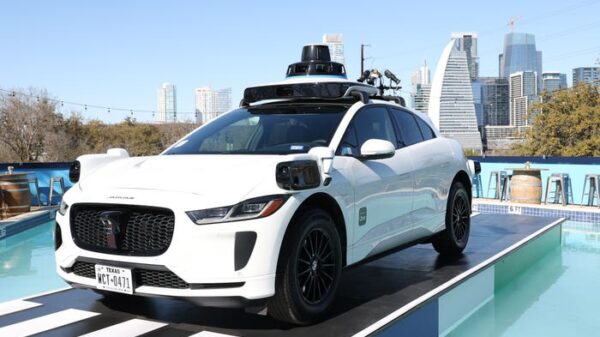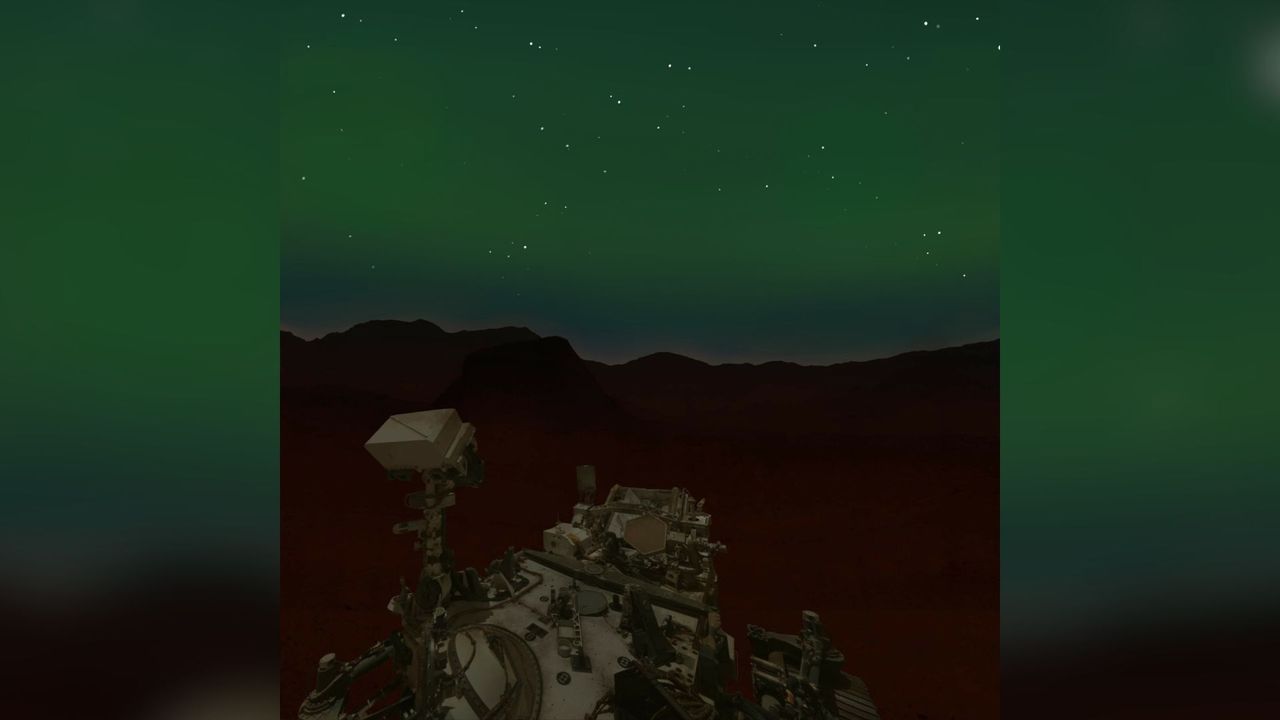The skies of Mars could soon glow green with auroras, and scientists have made significant strides in predicting when this spectacular phenomenon will occur. This development is crucial for future astronauts, as it may provide essential warnings against harmful solar radiation linked to these cosmic displays.
Auroras on Mars arise when charged solar particles collide with the planet’s thin atmosphere. Unlike Earth, where a magnetic field directs these particles toward the poles, Mars has lost its global magnetic shield. As a result, the entire nightside sky can exhibit a diffuse green light caused by oxygen atoms situated less than 100 kilometers above the Martian surface.
In March 2024, NASA’s Perseverance rover made headlines by capturing the first visible-light aurora on Mars, marking a historic moment in planetary observation. Recently, at the Europlanet Science Congress held in Helsinki, Finland, Elise Knutsen, a postdoctoral researcher from the University of Oslo, reported a second detection. She also revealed new forecasting tools developed by her team that aim to enhance the prediction of Martian auroras.
“The fact that we captured the aurora again demonstrates that our method for predicting aurorae on Mars and capturing them works,” Knutsen stated. This assertion underscores the growing understanding scientists have of the conditions leading to auroras on the Red Planet.
The initial observations of Martian auroras occurred on March 18 and May 18, 2024. Interestingly, the March display was approximately twice as bright as the one observed in May, as the latter was marred by dustier conditions that obscured many stars.
Predicting auroras on Mars remains a challenge. Unlike Earth, where decades of data support aurora forecasting, scientists have had limited information about the Martian atmosphere. Knutsen and her team programmed Perseverance’s cameras to monitor the Martian sky following solar eruptions known as coronal mass ejections (CMEs). These powerful outbursts can release billions of tons of charged particles into space, and faster CMEs are more likely to trigger auroras.
Mission constraints complicate the forecasting process. Observations must be scheduled about three days in advance, requiring researchers to make educated guesses about which solar storms are likely to produce auroras. Between 2023 and 2024, the team attempted to capture auroras eight times. Initially, their attempts were unsuccessful due to insufficiently strong CMEs. However, by focusing on faster and more intense storms, they ultimately succeeded in capturing two instances of the glowing green displays.
Despite their efforts, not every powerful CME resulted in an aurora. “Statistically there is also a degree of randomness to these things, so sometimes we’re just unlucky,” Knutsen explained. “Predicting the aurora on Earth down to minute precision isn’t an exact science either.”
As scientists continue to refine their predictive models, the potential for a vibrant display of auroras on Mars draws closer. This research not only enhances our understanding of the Martian atmosphere but also plays a significant role in preparing for future exploration missions to the planet.





































































